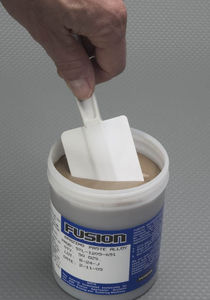
Paste soft brazing alloy 281


Add to favorites
Compare this product
Characteristics
- Configuration
- paste
Description
Joining Process & End-Use Service
Base metals, joint design, filler metals, and heating method can all impact key application properties ranging from joint strength to corrosion resistance.
For this reason, the user must answer two questions…
1.What is the application end-use service requirements/conditions?
2.What is the optimum joining process?
Fusion Paste Filler Metals offer consistency and efficiency when properly selected and can help achieve the key project objectives.
Joint Configuration
Joint designs can range from horizontal sandwich configurations to vertical tube to fittings. Fusion Pastes provide a unique solution since paste binder systems can be designed to optimize properties like adhesion and flow characteristics.
When brazing or soldering assemblies that require the filler metal to flow a considerable distance, a free-flowing flux/binder, and filler metal combination should be selected. Conversely, if the paste is applied to a joint with a narrow shoulder, a vertical surface, or larger gap, a restrictive flux/binder combination and/or sluggish filler metal may be required.
Since capillary flow and wetting are a combination of both the flux/binder and filler metal, Fusion Pastes come in different combinations to optimize these properties. For example, an adhesive binder can be paired with a free flowing alloy to stay in place on a vertical tube until the filler metal is molten, creating complete flow through the long tube joint interface.
VIDEO
Catalogs
Related Searches
- Automatic gun
- Welding gun
- Air gun
- Soldering station
- Brazing alloy
- Brazing oven
- Automatic brazing machine
- Automatic soldering station
- Induction brazing machine
- Brass brazing alloy
- Copper brazing alloy
- Gun with piston
- Semi-automatic brazing oven
- Paste brazing alloy
- Silver based brazing alloy
- Electric brazing machine
- Soft brazing alloy
- Paste soft brazing alloy
- Soldering gun
- Aluminum brazing alloy
*Prices are pre-tax. They exclude delivery charges and customs duties and do not include additional charges for installation or activation options. Prices are indicative only and may vary by country, with changes to the cost of raw materials and exchange rates.






